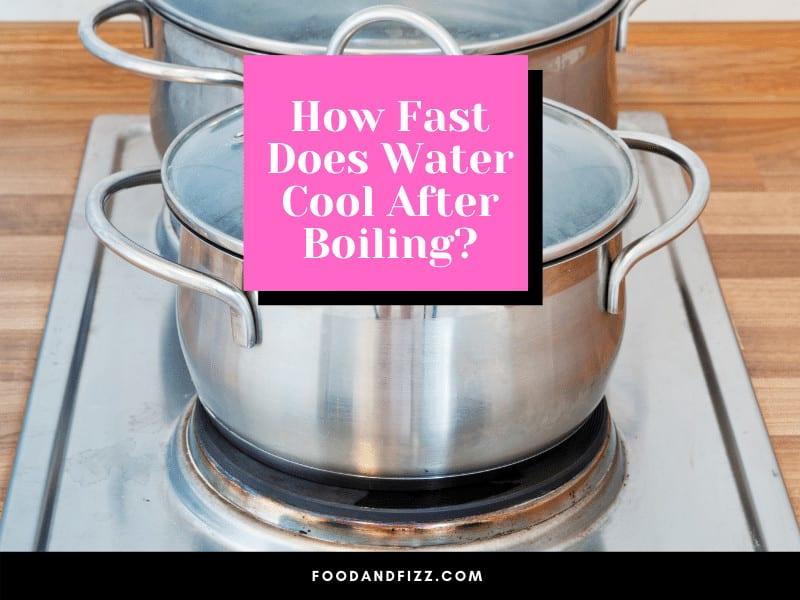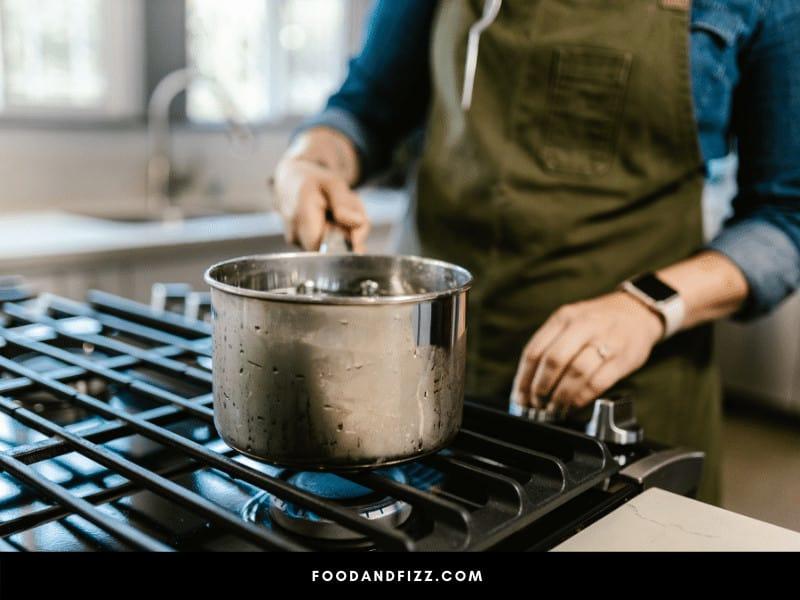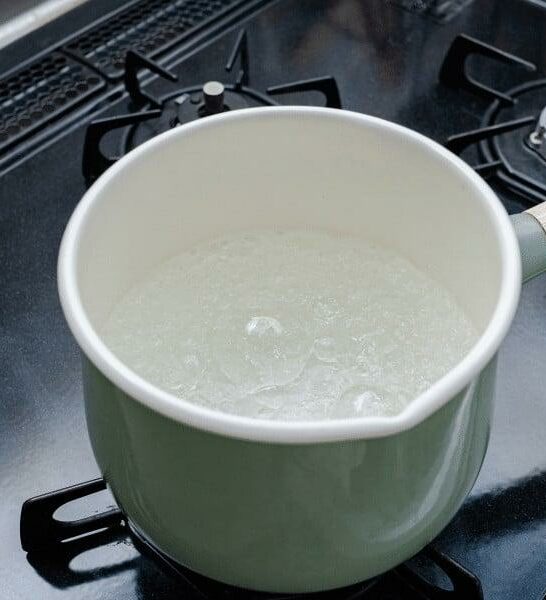How Fast Does Water Cool After Boiling? Nearly everyone knows that water boils at 212 °F. However, most people do not know how long it takes for water at boiling point to cool down to room temperature.
The knowledge of the amount of time it takes water to cool from boiling point creates a world of difference between a meal cooked by an amateur and one by a master chef. This is especially evident in recipes that require exact cooking times to prepare perfectly.
Boiling water begins to cool immediately after the heat source is removed. This cooling process is influenced by several factors and can take different amounts of time depending on the combination of these factors. In this article, we look into the complexities behind boiling water and the rate at which it cools.
How Fast Does Water Cool After Boiling?
After boiling a closed pot of boiling water will take an average of 100 minutes to reach room temperature. However, you should note that this time will vary depending on a variety of factors. The major deciding factors for the amount of time it takes boiling water to come to room temperature include the type of container the water is held in, the surface area of the water, and the temperature of the surroundings.

What Happens When Water Boils?
To fully understand the cooling of boiling water, you will need to grasp the concept of how water is boiled. This will help you visualize the cooling process of water as well as the different cooling rates that varying conditions can result in.
Newton’s first law of motion states that all objects in the universe remain in a state of rest until they are acted upon by an external force. Water, like all other objects, obeys this law and therefore stays at rest if undisturbed. However, when force, in the form of heat acts on water, the molecules are excited.
This results in the intense vibration of each water molecule. This vibration causes the molecules to rub against each other which leads to the creation of even more heat. (Think of how heat is generated when you rub your palms against each other on a cold day.)

The generation of heat between the water molecules creates a chain reaction where all the molecules rub against each other until they begin to vibrate in harmony. When this happens, the water comes to a boil.
As water boils at 212 °F, hitting this temperature will result in the water leaving the liquid state and becoming gaseous. Hence, boiling water remains a hair below 212 °F, allowing it to retain its liquid state with a relatively great amount of energy needed to push the molecules above the 212 °F temperature.
How is Boiling Water Cooled?
Now that we have established that boiling water has its molecules vibrating in equilibrium, we can deduce that the cooling process will involve slowing down the vibration of the molecules somehow. The factors mentioned earlier in this write-up are all involved in slowing down the vibrating water molecules to bring their temperature down.
How Does The Type of Container Affect the Cooling Rate of Water?
The container holding your water determines the cooling rate in different ways. One of these is the thermal conductivity of the container’s material. Thermal conductivity refers to how much heat can pass through a material in a specific amount of time.
Copper for example can transfer more heat than plastic in the same amount of time. This means boiling water in a copper container will reach room temperature a lot faster than if it is in a plastic container.

The thickness of the container is another factor that can affect the water’s cooling rate. Generally, having the boiling water in a thicker container means that it will take longer to cool than if it were in a thinner one.
How do Ambient Conditions Affect the Cooling Rate of Water?
Ambient conditions include the temperature, humidity level, and speed of the air in the surroundings. A cool environment will result in a faster cool time for the boiling water. If you were to place the container of boiling water into a larger container filled with cold water, for example, you will record a faster cooling rate than if it was in a hot environment.

Low humidity leads to a phenomenon called “cooling by evaporation” which speeds up the rate at which the boiling water cools. This is however only applicable if the container is left open. If you turn a fan on while keeping the water container uncovered, you will also notice a faster rate cooldown rate.
When boiling water is spread over a large surface area, it cools faster than if it were in contact with a small surface area. One way to speed up the rate of cooling of water is to have it in a flat and wide container. This allows the water to come in contact with the large surface area of the container as well as the surrounding air, allowing it to cool down quickly.
How Long Does It Take to Cool Water in Different Conditions?
Now that you understand the science behind the boiling and cooling of water, there are a few reference points that can help you calculate how long you will have to wait for boiling water to cool. Our reference container of water is a cup of boiling water subject to different conditions to determine how much time it will take for it to cool down.
In our tests, a cup of boiling water left uncovered and untouched at room temperature took about 46 minutes to cool down. The same cup of boiling water put in a fridge was brought to room temperature in about 30 minutes while it reached room temperature in just 15 minutes when it was put in a freezer.

Conclusion About How Fast Does Water Cool After Boiling
Boiling water cools at different rates depending on a variety of conditions. If it is poured out of the container it was heated in when it reaches boiling temperature, it will cool depending on how well insulated the container is. It might keep hot for a long time if placed in a preheated thermos.
It might cool very quickly if poured into a frozen cast iron skillet. It will cool more slowly if it is poured into a thin saucepan at room temperature than if it is poured into a large sheet pan at room temperature because the larger pan has a greater surface area.
Frequently Asked Questions on How Fast Does Water Cool After Boiling?
Does stirring help boiling water cool faster?
Gentle stirring can help your boiling water reach a lower temperature faster.
What happens when you leave a container of boiling water uncovered?
When you open the container holding your boiling water, the interaction of surrounding air with the water surface helps to speed up the rate of cooling.

